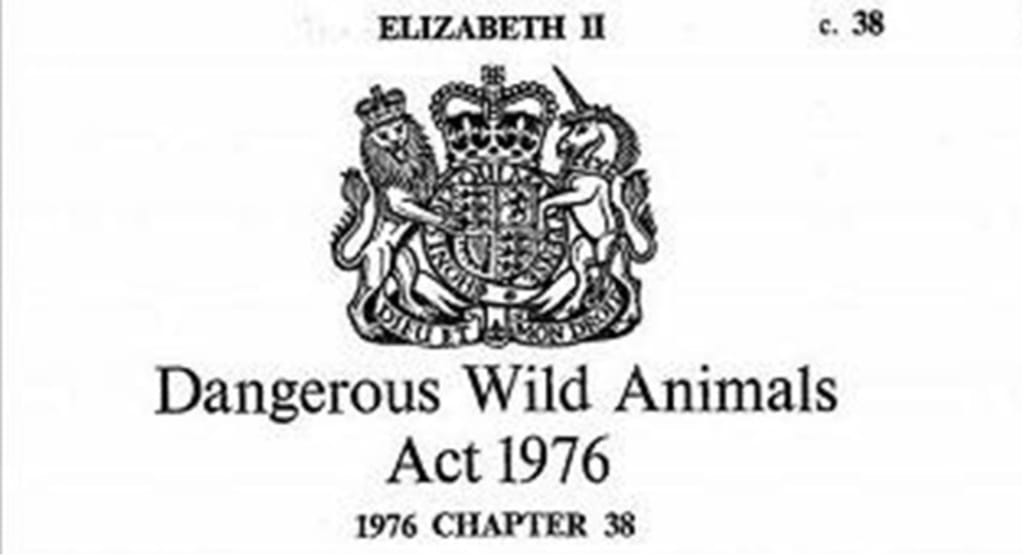On the Origins of the 'Dangerous Wild Animals Act' of 1976
Most people with an interest in the numerous reports of big cat sightings in Britain are aware of the 'Dangerous Wild Animals Act' of 1976, but few can describe its origins in detail...

For those of us who are intrigued by the frequent reports of big cat sightings in the wilderness and countryside of Britain, the ‘Dangerous Wild Animals Act’ of 1976 is likely to be familiar. It is an essential component of the tale, which is referred to by all enthusiasts and experts, but is actually understood in depth by very few…
Everyone knows that the UK government introduced this legislation as a means of restoring order and control to the unregulated exotic pet trade of the British Empire which had continued as an extravagant fashion trend right into the mid-late 20th century. Many commentators will even be able to quote significant parts of the act word-for-word verbatim, and whilst some may agree that this demonstrates an in-depth understanding, it fails to capture the chronology of events which brought about its introduction; particularly the one key incident which resulted in the media spotlight being blindingly cast onto the exotic pet trade and the subsequent furore of debates in parliament which aimed to rectify any enduring legacy of irresponsible ownership of dangerous animals and the unregulated trade that ensured a steady stream of such creatures into our little island.
The incident in question took place on Monday 26th October 1970, and judging by the few remaining written records which are easily available in the public domain, it must have been absolutely terrifying; on this day, eight year old ‘James Tyler’ was with his mother at the ‘Oldfields Trading Estate’ on Oldfields Road in Sutton, Surrey. As James ran towards his mother, he was suddenly and unexpectedly attacked by a large mountain lion which leapt out of the back of a parked van. James and his mother were assisted in the struggle by a man who came to their rescue; according to (Brown, 2020) this unnamed man tried to defend James using an iron bar to beat the mountain lion into retreat, but not before young James had already sustained serious injuries to his head and neck. Thankfully James was able to make a full recovery, and as far as can be told from researching this incident, he remains alive and well to this day; as does another interesting key figure connected to this incident…
The mountain lion (otherwise known as a cougar or a puma) was a large female called ‘Tara’, who was owned by a gentleman named ‘Maurice Wheeler’, a local builder; and in my research role behind the camera for the documentary ‘Britain’s Big Cat Mystery’ part of my duties entailed revisiting historic cases, trying to contact those involved and also to ascertain whether there are any details to add, which may not have been captured by journalists and written reports from the time. To my amazement I was actually able to make contact with Maurice, but perhaps unsurprisingly he declined to comment once I had explained the purpose in my contacting him.
Maurice was known to keep several large cats at the time of this incident, and such was the concern about his ownership of dangerous animals in the immediacy of the following days, that factory workers on the ‘Oldfields Trading Estate’ went on strike, threatening not to return until Maurice’s collection of big cats had been removed; eventually his exotic cats were re-homed by a zoo, but this was not the end of the debate.
This incident had caught the attention of the UK government, and only three days after the attack on James Tyler, a debate began in the ‘House of Lords’ to implement measures which would prevent such an incident from occurring again in the future (Hansard, 2020). It took nearly six years for the UK government to complete this, but the end result was the passing of the 'Dangerous Wild Animals Act' of 1976 into British law, and the introduction of measures designed entirely to make domestic ownership of exotic or dangerous animals beyond the means of the average Joe. Logically then, it is fair to assume that this culminated in a wave of multiple releases of big cats across Britain by private owners who could not afford the licences required to legally keep their ‘pets’.
The rest, as they say, is history…
Written by Tim Whittard.
REFERENCES
Brown, M. (2020) Has Anything Interesting EVER Happened In Sutton? Londonist. [Online] – Available from: https://londonist.com/london/best-of-london/has-anything-interesting-ever-happened-in-sutton (Accessed on 17th August 2020).
Hansard (1970) House of Lords. Animals Bill. 29 October 1970. Volume 312. [Online] – Available from: https://hansard.parliament.uk/Lords/1970-10-29/debates/61d2a13e-8133-44a1-a828-7dc0ae4c4320/AnimalsBillHl?highlight=dangerous%20wild%20animals%20attacked#contribution-d8e3ef60-161c-43a7-96b2-95a84ddd6c2d (Accessed on 17th August 2020).
About the Creator
Tim Whittard
Tim Whittard is a mental health nurse specialising in psychiatric intensive care. Additional interests include; parapsychology and zoology/cryptozoology. He has written and published several essays and also a bestselling book.






Comments
Tim Whittard is not accepting comments at the moment
Want to show your support? Send them a one-off tip.